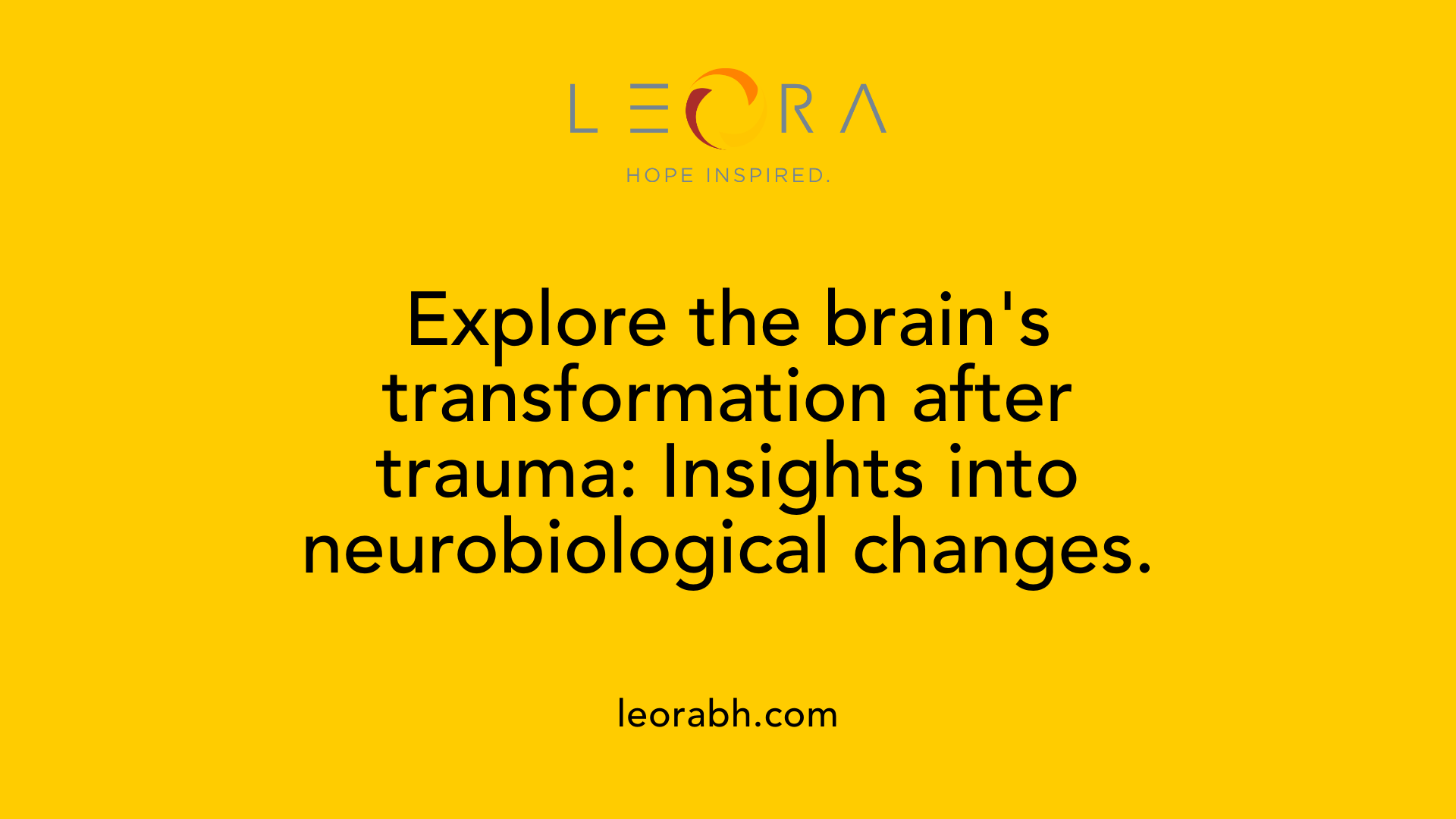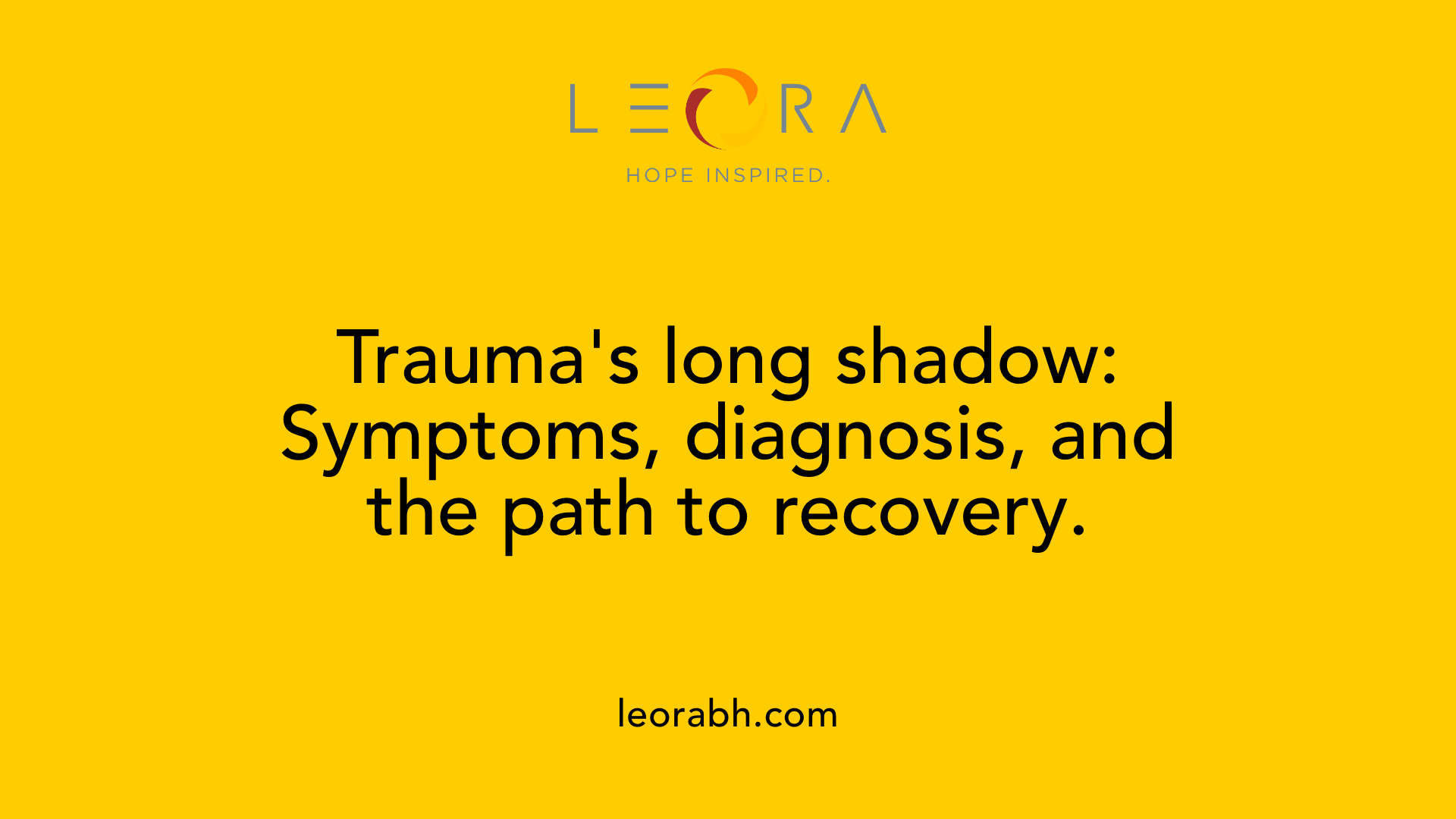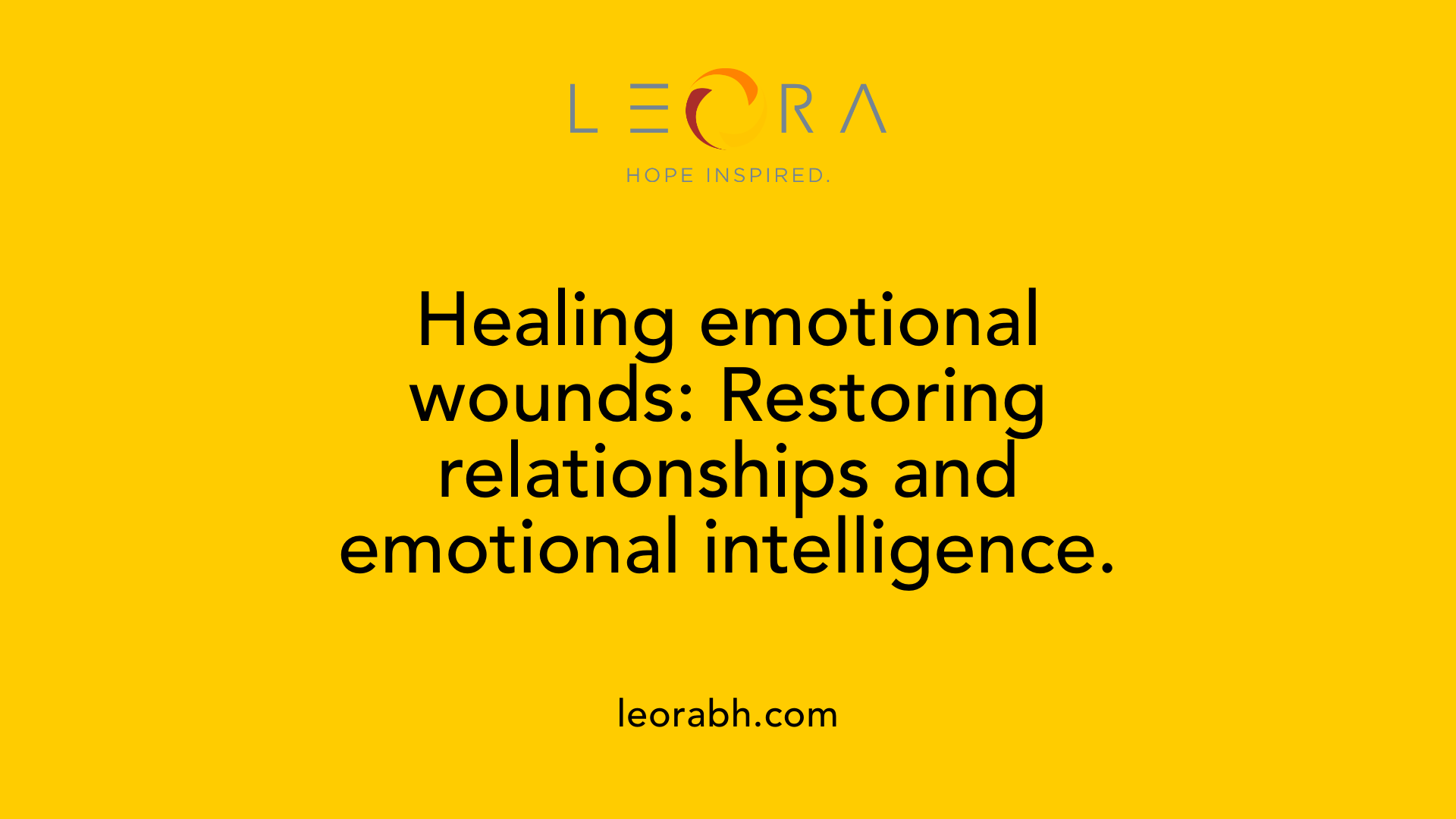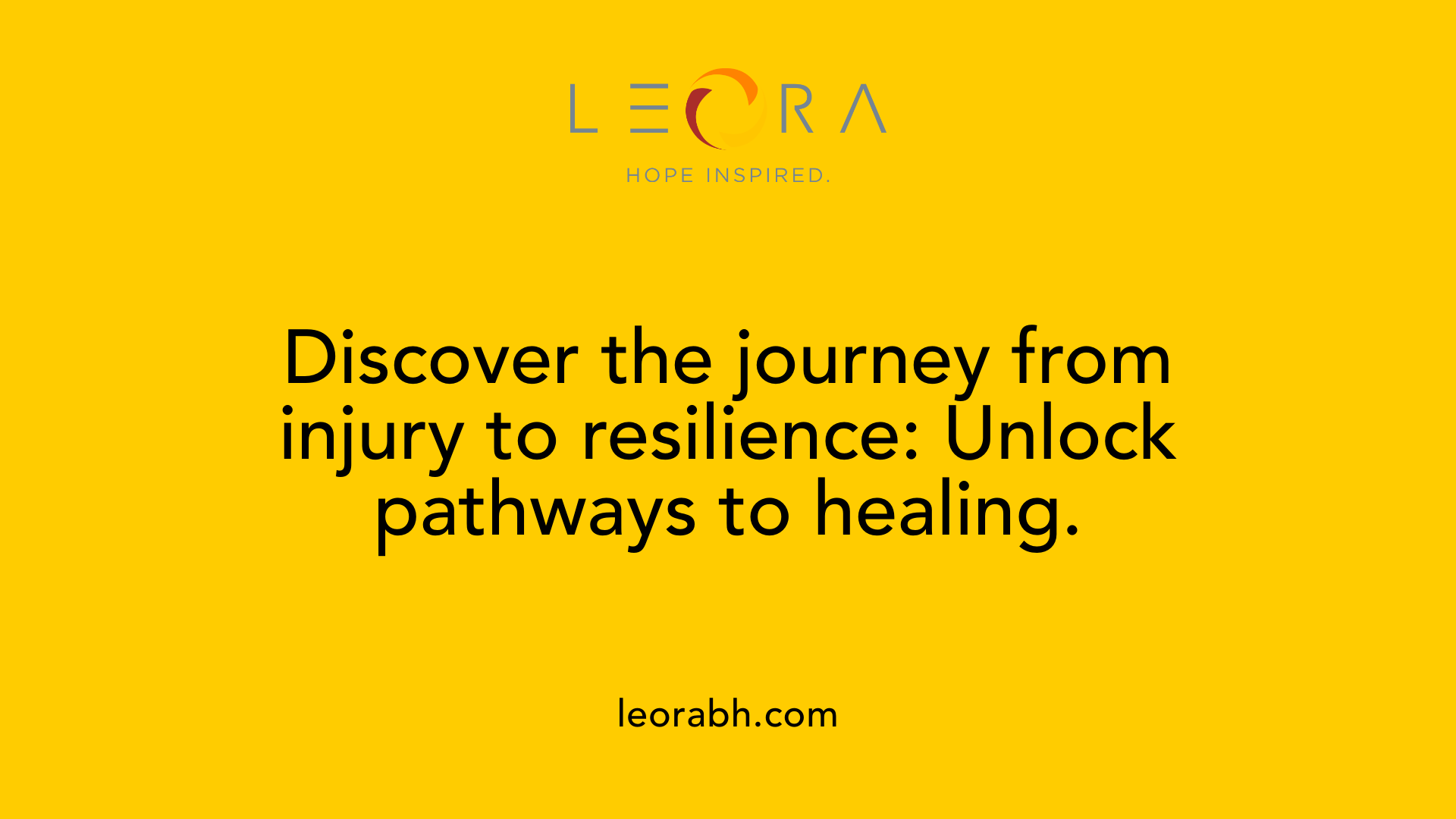Understanding the Impact of Past Trauma on Present Behavior
The Hidden Roots of Behavior: Exploring Trauma’s Lasting Effects
Unraveling how past traumatic experiences shape current actions and emotional health
Trauma is a pervasive influence that can profoundly shape an individual’s psychological and behavioral responses. Understanding how past trauma manifests in present behavior is essential for effective treatment, healing, and fostering resilience. This article delves into the complex ways trauma impacts emotional regulation, neurological functioning, relationships, and recovery strategies, providing a comprehensive overview rooted in recent research and clinical insights.
Understanding Trauma and Its Immediate Reactions

What are the common signs of emotional trauma in adults?
Adults experiencing emotional trauma may exhibit a range of symptoms that can affect their mental, physical, and emotional well-being. Common signs include feelings of emotional numbness and detachment from others, which serve as coping mechanisms to manage overwhelming distress.
Many adults also report persistent sadness, anger, or irritability that does not seem to go away. These emotional responses often coexist with physical symptoms such as fatigue, difficulty sleeping, and changes in appetite, which can further hinder daily functioning.
Behaviorally, trauma can lead to social withdrawal and avoidance of situations, people, or places that remind individuals of the traumatic event. Some may stop participating in activities they previously enjoyed, reflecting a loss of interest or motivation.
Additionally, they might experience feelings of shame, guilt, or chronic anxiety, with ongoing fears about their safety or the safety of loved ones. These reactions are signs that the trauma is impacting their ability to feel safe and secure.
Recognizing these signs early is essential, as it allows individuals to seek appropriate mental health support. Treatment options such as therapy or counseling can help process traumatic memories, restore emotional stability, and promote recovery.
Physical and emotional responses
Physical reactions to trauma are immediate and often instinctual responses caused by the body's stress response system. Common physical signs include rapid heartbeat, shallow breathing, sweating, nausea, cold hands, trembling, or dizziness. These responses prepare the body for a fight, flight, or freeze action.
Emotionally, individuals may feel confusion, shock, or fear. Some experience dissociation — a sense of detachment from reality or from themselves — which helps them cope but can interfere with daily functioning.
These reactions are normal adaptive responses to overwhelming events but can become problematic if they persist or intensify over time. It is important to understand these reactions as natural, yet they signal the need for support to process and resolve the trauma.
Further insights
To learn more about these immediate physical and emotional reactions to trauma, searching for terms like "Immediate physical and emotional reactions to trauma" can provide additional resources. Understanding these responses is a vital first step toward trauma-informed care and recovery, emphasizing safety, support, and healing.
Trauma’s Impact Across Domains
Trauma can profoundly influence multiple areas of an individual’s life, impacting emotional, physical, cognitive, behavioral, and social well-being.
What are the symptoms, diagnosis, and long-term consequences of trauma, such as PTSD?
Trauma, especially trauma-related disorders like Post-Traumatic Stress Disorder (PTSD), manifests through a range of symptoms. Common signs include intrusive memories such as flashbacks and nightmares, emotional dysregulation, hypervigilance, avoidance of trauma reminders, and physical reactions like increased heart rate and sleep disturbances.
Diagnosing trauma-related conditions requires a thorough clinical assessment, focusing on symptom duration, severity, and impact on daily life. While some symptoms appear shortly after the trauma, others may develop months or years later, making diagnosis complex.
The long-term effects of untreated trauma can be severe. Chronic mental health issues such as depression, anxiety, substance abuse, and difficulties in relationships may ensue. Physically, trauma can contribute to cardiovascular problems, hypertension, and other metabolic conditions. Persistent trauma may evolve into complex PTSD, characterized by ongoing emotional dysregulation, negative self-view, and challenges with trust.
Effective treatment strategies include trauma-focused psychotherapy—such as cognitive behavioral therapy (CBT) and eye movement desensitization and reprocessing (EMDR)—alongside medication and self-care practices. These approaches aim to help individuals manage symptoms and promote recovery. However, the extent of recovery can vary, with some individuals facing lifelong challenges depending on the trauma's nature and duration.
Neurobiological Findings: How Trauma Changes the Brain

What are the main psychological and neurological effects of trauma on individuals?
Trauma significantly alters both psychological states and brain functions. Neurologically, it impacts key brain regions such as the hippocampus, amygdala, and prefrontal cortex. The hippocampus, responsible for memory and learning, can shrink, leading to memory difficulties. The amygdala becomes hyperactive, heightening fear responses, while the prefrontal cortex's ability to regulate emotions and make rational decisions diminishes.
These changes affect how individuals perceive and respond to stress. Trauma activates the brain's fear circuitry rapidly, often bypassing rational thought, which results in survival responses like fight, flight, or freeze. Some people may experience dissociation or tonic immobility as protective mechanisms.
Biologically, trauma affects neuroendocrine systems such as the hypothalamic–pituitary–adrenal (HPA) axis. This can cause abnormal cortisol levels, contributing to increased arousal and stress reactivity. Over time, these neurochemical and structural brain alterations may increase susceptibility to mental health conditions like PTSD, depression, and anxiety.
Furthermore, trauma influences brain network connectivity, impairing pathways responsible for emotion regulation, memory, and executive functioning. These neurobiological effects are especially impactful during childhood, a critical period for brain development, potentially leading to long-lasting cognitive, emotional, and social challenges.
Understanding these neural changes underscores the necessity of trauma-informed approaches. Treatments such as trauma-focused cognitive-behavioral therapy and EMDR aim to target these brain alterations, helping restore balance in neural functioning. Creating safe, supportive environments fosters healing by reducing ongoing stress and promoting recovery.
In summary, trauma profoundly changes the brain, affecting structure, function, and connectivity, which collectively contribute to the complex array of psychological and emotional difficulties seen in survivors. Recognizing these changes plays a critical role in developing effective interventions and supporting trauma recovery.
Childhood Trauma and Its Lifelong Influence
How does childhood trauma affect mental health and development later in life?
Childhood trauma can profoundly influence an individual’s mental health and overall development well into adulthood. The impact begins early, as traumatic events such as abuse, neglect, or exposure to violence disrupt normal brain development. Critical areas involved in emotion regulation, memory, and social behavior, including the amygdala, hippocampus, and prefrontal cortex, may be affected, leading to difficulties in managing emotions and relationships.
Trauma activates the body’s stress response systems, notably the hypothalamic–pituitary–adrenal (HPA) axis, which can become overactive or dysregulated. This biological change heightens vulnerability to mental health conditions such as depression, anxiety, post-traumatic stress disorder (PTSD), and substance use disorders. Moreover, chronic stress and trauma in childhood have been linked to physical health issues like cardiovascular disease, immune dysfunction, and chronic pain.
Maladaptive coping mechanisms, including self-harm, substance abuse, or emotional withdrawal, often develop as ways to handle overwhelming feelings. These responses can further entrench mental health struggles, impacting self-esteem and impairing social functioning.
Intergenerational effects also play a role, as trauma can impair a person’s ability to parent effectively, potentially passing the cycle of adverse experiences to future generations. Early intervention, trauma-focused therapy, and supportive social environments are crucial in addressing these long-term consequences.
Understanding the enduring effects of childhood trauma underscores the importance of early diagnosis, comprehensive treatment plans, and societal efforts to prevent trauma and support resilience. By doing so, individuals affected by childhood trauma can foster recovery, build healthy relationships, and lead fulfilling lives.
Trauma and Psychological Disorders: PTSD and Beyond

What are the symptoms, diagnosis, and long-term consequences of trauma, such as PTSD?
Trauma can manifest in various psychological disorders, the most well-known being post-traumatic stress disorder (PTSD). The symptoms of PTSD include intrusive memories such as flashbacks and nightmares, heightened arousal or hypervigilance, avoidance of reminders of the traumatic event, and emotional dysregulation. Individuals might experience feelings of anxiety, shame, or numbness, and often find it difficult to trust others or engage in daily activities.
Diagnosis of PTSD involves a thorough clinical assessment that evaluates these symptoms' presence, duration (typically lasting more than a month), and how much they impair the person's functioning. Sometimes symptoms can have a delayed onset, appearing months or even years after the traumatic event.
The long-term impacts of trauma extend beyond PTSD. Chronic trauma can result in persistent depression, substance use disorders, relationship struggles, and social withdrawal. Physically, untreated trauma can increase risks for cardiovascular problems, hypertension, and metabolic disturbances.
Complex PTSD, or CPTSD, may develop in cases of prolonged and repeated trauma. It features ongoing emotional dysregulation, negative self-perception, and difficulties forming or maintaining trusting relationships.
Effective treatment options include trauma-focused psychotherapies such as EMDR and cognitive-behavioral therapy, alongside medications and self-care practices like mindfulness and structured routines. While many find relief through these methods, some individuals may face lifelong challenges, particularly with severe or repeated trauma exposures.
Trauma’s Effect on Relationships and Emotional Intelligence in Adults
 Trauma can have a profound impact on how adults perceive, manage, and relate to their emotions and others. When trauma occurs, especially during formative years, it often leads to neural changes in brain systems involved in emotional recognition and regulation. Key networks such as the salience network, which helps identify and prioritize emotional stimuli, and the default mode network, which is associated with self-awareness and introspection, can become dysregulated.
Trauma can have a profound impact on how adults perceive, manage, and relate to their emotions and others. When trauma occurs, especially during formative years, it often leads to neural changes in brain systems involved in emotional recognition and regulation. Key networks such as the salience network, which helps identify and prioritize emotional stimuli, and the default mode network, which is associated with self-awareness and introspection, can become dysregulated.
These neural adaptations may impair an individual's ability to accurately recognize and interpret emotions, both within themselves and in others. As a result, many trauma survivors experience difficulties in trusting and forming close, intimate relationships. They might present with emotional dysregulation, which manifests as intense mood swings, dissociation, or emotional numbness. These challenges can lead to patterns of maladaptive coping, such as avoidance or hypervigilance, further complicating social interactions.
Research indicates that trauma-related neural changes contribute to difficulties in establishing and maintaining healthy relationships. Survivors may struggle with vulnerability, harbor fears of betrayal, or interpret benign cues as threatening. This can result in distant or conflict-ridden relationships, impacting their overall emotional well-being.
However, healing through therapeutic interventions like trauma-focused cognitive-behavioral therapy (TF-CBT) and other neuromodulation techniques can promote neural regeneration. Recovery efforts aim to restore the balance and functionality of these brain networks, improving emotional recognition and regulation skills. Enhanced neural health helps survivors develop greater self-awareness, trust, and empathy, fostering more stable and satisfying relationships.
In summary, trauma significantly influences adult emotional intelligence and relationships by altering brain networks critical to social functioning. While these changes can pose challenges, evidence suggests that targeted therapy and resilience-building strategies can help reverse neural effects, paving the way for healthier emotional connections and personal growth.
Trauma-Informed Care and Intervention Strategies
What are trauma-informed care and intervention strategies for recovery?
Trauma-informed care (TIC) is an approach that recognizes the pervasive effects of trauma on individuals and incorporates this understanding into all organizational policies and practices. Its primary goal is to create a safe, supportive environment that encourages healing while minimizing the risk of re-traumatization.
Organizational strategies in TIC include comprehensive staff training to increase awareness of trauma responses, leadership commitment to fostering a trauma-sensitive culture, and the development of policies that emphasize safety, collaboration, and empowerment. These measures ensure that every level of service delivery acknowledges trauma’s impact and responds appropriately.
Clinically, trauma-informed practices involve screening for trauma history in a sensitive, non-invasive way. Treatment approaches often encompass evidence-based therapies such as prolonged exposure therapy, eye movement desensitization and reprocessing (EMDR), and child-parent psychotherapy, tailored to the needs of each individual. The focus is on helping clients understand their symptoms, normalize their experiences, and develop skills to manage emotional and physiological reactions.
Key recovery strategies include psychoeducation about trauma’s effects, teaching self-regulation and coping skills, and fostering hope and resilience. It’s essential to involve individuals actively in their treatment process, respecting their choices and cultural backgrounds.
Implementing trauma-informed care leads to better engagement and outcomes, reducing feelings of shame and helplessness while promoting safety and trust. It benefits not only the individuals receiving care but also supports staff well-being, creating a sustainable environment for recovery.
For those seeking additional insights on this topic, searching for "Trauma-informed care approaches and strategies" can provide further valuable resources and practical tools. Overall, trauma-informed strategies are essential for fostering healing and resilience across health, social, and community services.
The Role of Cultural and Social Factors in Trauma Response and Recovery
How do cultural influences shape trauma perception?
Cultural beliefs and norms significantly influence how individuals experience, interpret, and express trauma. Different cultures may have varied understandings of trauma causes and appropriate responses, affecting whether symptoms are openly acknowledged or stigmatized. For instance, some communities may see trauma as a spiritual or moral imbalance, leading to traditional healing practices.
Cultural context also impacts how symptoms such as shame, guilt, or anger are communicated, which can influence diagnosis and treatment approaches. Recognizing these cultural factors enables providers to develop more respectful and effective interventions that align with a person's belief systems.
What is the impact of intergenerational trauma and community effects?
Intergenerational trauma occurs when unresolved traumatic experiences are passed from one generation to the next, often within families or communities. This legacy can manifest as collective emotional distress, altered parenting behaviors, or disrupted cultural identity.
Community effects include high rates of mental health issues, substance misuse, and social problems like violence or household instability. Historical traumas, such as slavery, colonization, or forced migration, have left lasting scars on entire groups, influencing community resilience and healing capacity.
Understanding this shared trauma helps in framing recovery as a collective process, emphasizing community-based support and culturally sensitive healing practices.
How are traditional healing practices incorporated into trauma treatment?
Traditional and ceremonial healing methods serve as vital components of trauma recovery for many cultural groups. These may include spiritual rituals, storytelling, rituals, and community gatherings designed to restore balance, affirm cultural identity, and foster social connectedness.
Incorporating these practices into formal treatment can enhance trust, improve engagement, and promote a sense of empowerment among trauma survivors. Combining scientific therapies with cultural traditions respects the person's background and supports holistic healing.
| Cultural Aspect | Traditional Practice | Purpose/Benefit |
|---|---|---|
| Indigenous healing | Ceremonial dances, rituals | Restore spiritual balance |
| Asian communities | Meditation, acupuncture | Facilitate emotional regulation |
| African traditions | Storytelling, community rituals | Rebuild social bonds and cultural identity |
| Religious faith | Prayer, faith-based counseling | Provide hope and meaning |
By honoring cultural roots, trauma-informed care offers a comprehensive approach that respects individual backgrounds and promotes long-term recovery.
Summary and Pathways to Healing

What are the main psychological and neurological effects of trauma on individuals?
Trauma significantly impacts how the brain and mind function. Psychologically, it can lead to emotional dysregulation, intrusive memories, nightmares, anxiety, depression, dissociation, and difficulty trusting others. These responses are often adaptive survival mechanisms but can become persistent, impairing daily life.
Neurologically, trauma alters key brain structures such as the hippocampus, amygdala, and prefrontal cortex. The amygdala, involved in fear detection, becomes hyperactive, heightening fear responses. The hippocampus, critical for memory processing, may shrink, leading to difficulty distinguishing between past and present experiences. The prefrontal cortex, responsible for reasoning and impulse control, often shows reduced activity, impairing decision-making and emotional regulation.
Furthermore, trauma influences the neuroendocrine system, particularly the hypothalamic-pituitary-adrenal (HPA) axis, resulting in abnormal cortisol levels that contribute to arousal and stress-related symptoms. Neurobiological changes can also disrupt connectivity among brain regions, making individuals more vulnerable to mental health disorders like PTSD, anxiety, and depression.
Understanding these physical and psychological impacts is vital for developing effective treatment strategies. Interventions focusing on neural rewiring, emotional regulation, and creating safe, supportive environments can promote healing and resilience.
Stages of trauma recovery
Trauma recovery typically occurs in three interconnected stages:
- Safety and Stabilization: Establishing a sense of security through grounding techniques, validation, and building trust.
- Processing and Mourning: Confronting and making sense of traumatic memories, allowing emotional expression, and grieving what was lost.
- Integration and Reconnection: Rebuilding a sense of purpose, relationships, and identity, integrating the trauma into a cohesive life story.
Progress through these stages varies per individual and depends on support, timing, and readiness.
Evidence-based treatment options
Effective treatments are tailored to individual needs but often include:
- Trauma-Focused Cognitive Behavioral Therapy (TF-CBT): Helps reframe fearful thoughts and process traumatic memories.
- Eye Movement Desensitization and Reprocessing (EMDR): Facilitates processing traumatic memories through bilateral stimulation.
- Prolonged Exposure Therapy: Encourages gradual confrontation of trauma memories to reduce avoidance.
- Somatic and Body Therapies: Address physiological responses and promote relaxation.
- Medication: May be prescribed for managing symptoms such as anxiety and depression.
Combining therapies with supportive environments enhances recovery chances.
Building resilience through healing
Resilience—the ability to adapt and recover—is fostered through various pathways:
- Creating safe and supportive environments: Ensuring physical and emotional safety reduces hyperarousal.
- Developing strong social support: Relationships with trusted individuals bolster feelings of connection and hope.
- Practicing mindfulness and emotional regulation skills: Techniques such as meditation and grounding strengthen coping skills.
- Empowering personal agency: Involving individuals in decisions and treatment plans enhances self-efficacy.
- Cultural and spiritual integration: Respecting and incorporating cultural beliefs and spiritual practices can reinforce resilience.
Overall, understanding trauma’s effects and utilizing evidence-based interventions create pathways toward healing. Recovery is a gradual process that benefits greatly from a compassionate approach rooted in trust, safety, and empowerment.
Moving Toward Recovery and Resilience
Acknowledging and understanding the pervasive impact of past trauma is a vital step in promoting healing and improving present well-being. Trauma influences psychological, biological, and social facets of an individual, shaping behaviors and emotional responses long after the original events. Recognizing signs of trauma, implementing trauma-informed care, and applying evidence-based therapies can facilitate recovery. Building resilience involves fostering safe environments, strengthening social supports, and addressing cultural influences. Ultimately, with appropriate understanding and intervention, individuals can reframe their trauma experiences, regain control over their emotional health, and forge pathways to a more resilient and fulfilling life.
References
- Understanding the Impact of Trauma - NCBI
- Trauma and Violence - What Is Trauma and Its Effects? - SAMHSA
- The impact of childhood trauma on children's wellbeing and adult ...
- Trauma | The Administration for Children and Families
- How Childhood Trauma May Impact Adults | URMC Newsroom
- Effects | The National Child Traumatic Stress Network
- Trauma-Informed Care: A Sociocultural Perspective - NCBI
- Trauma and Mental Health: Understanding the Psychological Impact ...
- The Impact of Past Trauma on Psychological Distress - Frontiers
Find Your Inner Light
Related Articles
Schedule an Assessment
Leora Behavioral Health provides comprehensive treatment services, including ambulatory detox, mental health IOP, and SUD IOP, to support your journey toward lasting recovery.
Our caring team will guide you through the admissions process and create a personalized treatment plan tailored to your unique needs. We welcome walk-ins. If you or a loved one is struggling, reach out today. We’re here to help.


.svg)




.svg)
.svg)
.svg)
.svg)
